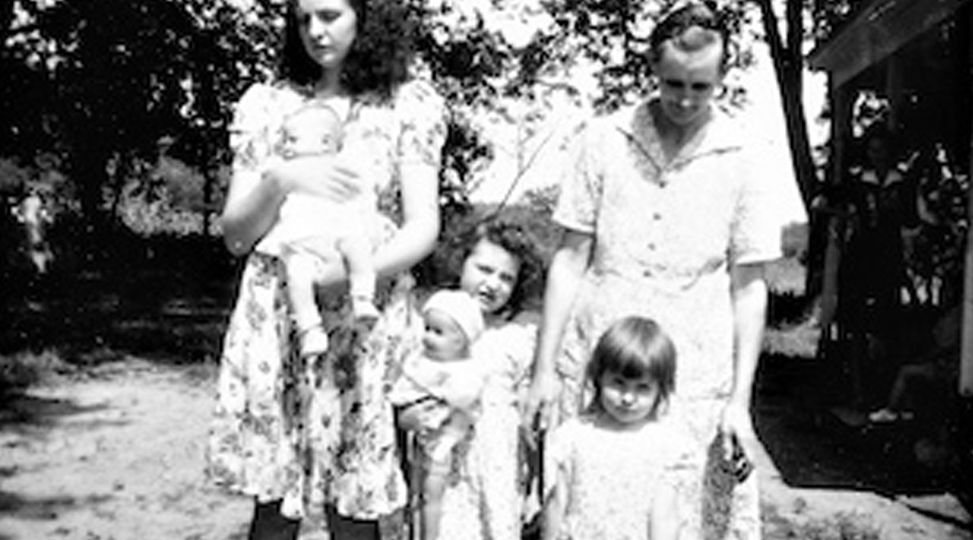
Unraveling Tragedy
An Evolution of Schizophrenia Through the Functions of Personality
Shirl Hughes Terrell, January 22, 2019
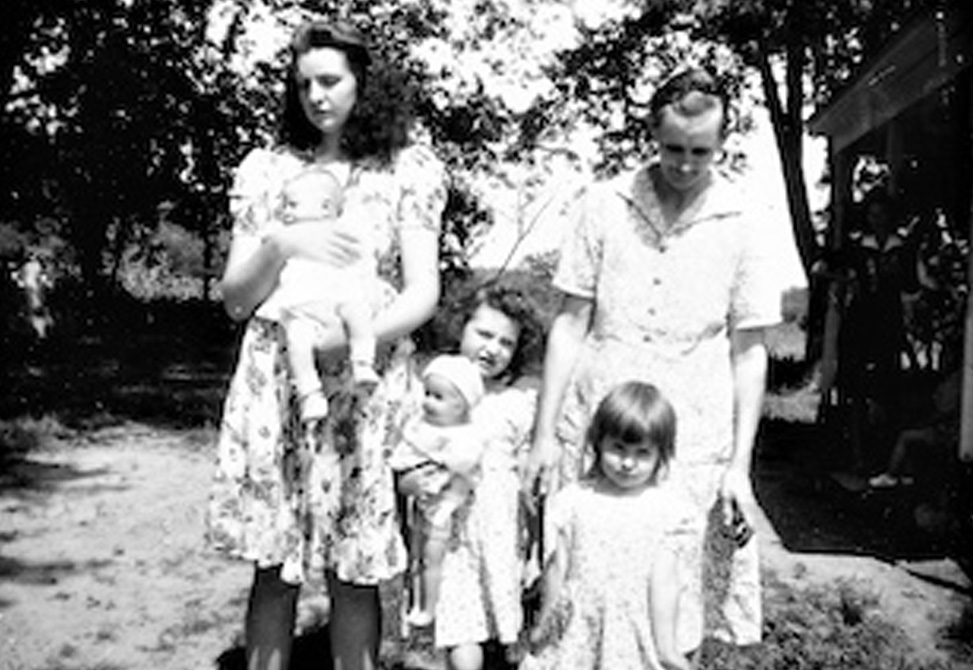
Look how the same possibilities
unfold in their opposite demeanors,
as though one saw different ages
passing through two identical rooms.
My sister Christin was the most influential person in my childhood and into midlife, the one whose anguish became my family’s albatross. Her life illustrates the impact of a lack of positive parental guidance on the development of personality and, in particular, what happens if the inner parent fails to develop. Family tragedy contributed to our parents’ lack of involvement in her upbringing and deprived Christin of a compass by which to navigate psychic turbulence during midlife. While few people succumb physically to such crises, many lack the tenacity to face the shadows that loom in the second half of life. At times, parts of the personality that might have developed instead become concretized and detrimental to further growth. Studying typologies other than one’s own opens up pathways that aid in detecting potential crises before one is blindsided by them. Christin’s life journey illustrates the need to meet life with the dominant and auxiliary functions synchronized and with an awareness of the tertiary and inferior functions so that we don’t find ourselves adrift, without vision, purpose, or hope.
A Family Trauma

Polio, pandemic during the early 1950s before the vaccine was developed, is an invasive disease that can result in infections in the brain and spinal cord, along with other effects of paralysis of the muscles that aid in breathing. My mother’s nemesis required long confinement in an iron lung that saved her life but left her lungs weak and vulnerable. That weakness, coupled with the long and bitterly cold winters we endured in an isolated farmhouse, inevitably contributed to my mother’s contracting pneumonia every year. As she struggled to maintain her breath during her illnesses, my sisters and I died a thousand deaths.
As child caretakers, we watched her fight to stay alive and witnessed our father’s efforts just to keep the family warm and fed. Summers provided some relief, but being saddled with farm chores and three young daughters to care for and keep in line provided our mother little recovery time. While other children went about playing and laughing, we endured mother’s angry scowl as she accused us of being “lazy, good-for-nothing outfits!” Mother often stormed out of the house in a rage, threatening to find a switch to “cut the blood” out of us. Little if any parenting existed in our household. We dwelled in a state of turmoil, due in part to my mother’s physical frailties, which, alongside her depression and anxiety, kept us all in constant fear for our lives.
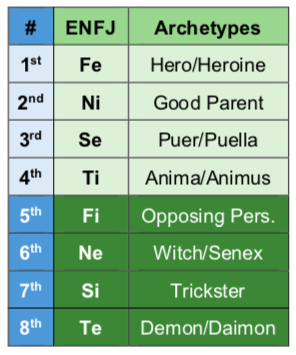
According to von Franz (2013), the differentiation of types starts in early childhood, especially the two attitudes, extravert and introvert, and may even be apparent in a “child as young as one and a half,” albeit not definitively (p. 11). As Jung (1963) demonstrated in Memories, Dreams, Reflections, memories can come alive and spark long-forgotten events or repressed thoughts from childhood. Similarly, my sister Fern and I recall Christin being the one to initiate games and offer to help with chores. She was also the child who ran from my mother to escape spankings while knowing the punishment would be worse when she was eventually caught. Christin enjoyed spending the night with her friends, aunts, and grandparents whereas I wanted to stay home and hide behind my mother’s skirts. Even at the young age of six, Christin fit Jung’s (1943/1966) description of the extravert as someone who is often characterized by an outgoing, accommodating nature that adapts easily to a given situation, quickly forms attachments, and setting aside any fears will “often venture forth with careless confidence into unknown situations” (¶ 62). Christin’s extraversion blossomed as she matured.
Parenting and the Internal Parent
Christin was a daddy’s girl; wherever he was, she was nearby. My dad, an extraverted musician, had taught himself to play fiddle, guitar, organ, harmonica, and other instruments. He was a farmer, but on the weekends he was a star, and everyone in the county and beyond admired his talent and flocked to hear him play at various venues. Christin aimed to have a primary role in Dad’s show, so she charmed him into patiently teaching her to play the guitar so as to accompany him during his performances. Music education has a preponderance of ENFJ and INFJ types (Wubbenhorst, 1991, p. 7), and Christin also helped my dad instruct other players in his band. Being the jealous sister that I was, I often asked her how she knew when to change chords.To my amazement, she would simply reply, “I don’t know. I just know.” According to Jung, intuition is not mere perception but a creative process that puts as much into the object as it takes out (1921/1971, ¶ 610). Initially, Christin’s support of others in their musical efforts demonstrated at a young age her introverted intuition (Ni) function at work in the auxiliary position, the good parent; sadly this function failed to develop further.
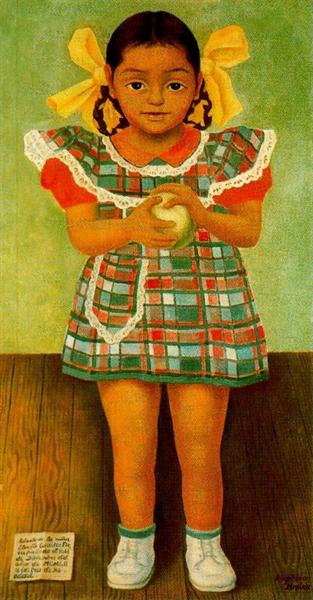
Christin’s extraverted sensing (Se) tertiary function thrived as she loved “taking charge of parties, events, and gatherings, and bringing energy to interactions” (Shumate, 2017, p. 5). She invited friends over, gave parties at our dilapidated house, was president of the 4-H Club, worked various jobs, and had boyfriends fighting over her; by contrast, I was too embarrassed to tell anyone where I lived, and I was far too shy to look at, let alone talk to, boys. John Beebe (2006) associated the tertiary function with the puer aeternus and puella aeterna archetypes. Jungian psychology identifies the puer aeternus as an adult man whose emotional life has remained at an adolescent level, usually coupled with too great of a dependence on the mother (Sharp, 1991). The puella aeterna refers to a woman who lives in a dream world as she seeks eternal youth and excitement, and, according to Marion Woodman (1993), she may have an obsession with her father. My musician father’s ESFP type, coupled with his physical and emotional absence as he strove to maintain the family farm and play gigs on the weekends, likely contributed to Christin’s youthful development of extraverted sensation. Her intense drive for parental attention and approval, neither of which my mother was able to provide, propelled the constellation of her puella archetype. Christin’s actions also illustrate how Se in the third position may “engage in impulsive behaviors that appear immature and not well-thought out” (Shumate, 2017, p. 5).
In this vein, at Christmas one year when Christin was around 12 or 13 and operating with an intact superior function, extraverted feeling, and an overactive tertiary extraverted sensing puella, she decided to visit the most expensive department store in town where she bought each family member a gift, including one for herself. While this was a lovely thought, she charged the items, leaving the bill for my parents, who had no way of paying it. Needless to say, tensions ran high during that holiday season. Christin’s actions demonstrated her underdeveloped introverted intuition in the position of the parent archetype that depends on one’s vision, utilizing a “knowing based on trusted insight, visualizing the essence,” and being able to synthesize the whole (Shumate, 2017). If Christin had had the ability to foresee the consequences of her reckless, albeit well-meaning behavior, this might have prevented her Fe from ratcheting up forces with her Se puella, which sought instant gratification at the expense of the family’s limited resources. Although I loved the sweater she gave me, I remember our bafflement over how Christin could have committed such a crime against the family.
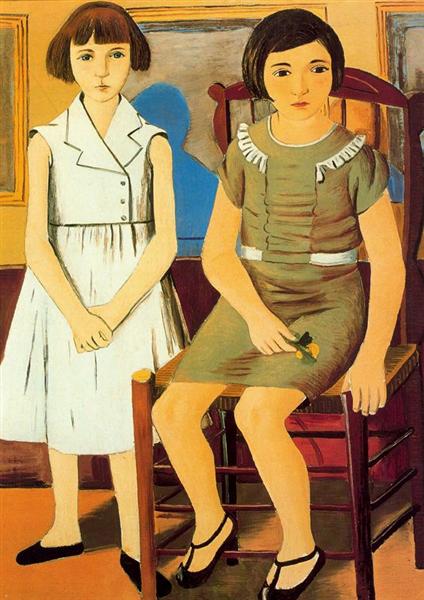
Christin’s adamant attempt to attend college likely resulted from her mostly unconscious extraverted thinking (Te), the planning, operationalizing, enforcing function (Beebe, 2006). Her greatest desire was to remain part of the crowd, so the logical path was to follow the group into college life at any cost. Christin’s superior function, Fe, outmatched her Te and her inferior thinking function Ti, which contributed to defeat in her collegial pursuits. Moreover, her auxiliary function, Ni, remained in hiding. Stein (1998) saw the superior and secondary functions in combination as most effectively used for orientation and accomplishment (p. 32); apparently, that combination (Fe and Ni) was not at work for my sister in her endeavor.
Christin needed balance between her dominant Fe and her inferior function Ti, the animus archetype. Beebe (2007) identified Fe and Ti as the spine of the ENFJ personality, that which provides a strong backbone to deal with life, and Sharp (1987) argued that while the extraverted feeling type may think a great deal, thinking is always subordinated to feeling. Collaboration between these functions would have contributed significantly to Christin’s fortitude in facing life’s challenges.
A few years later, Christin and I moved to another state where we lived together as roommates, a situation riddled with arguments and passive-aggressive behaviors on both of our parts, probably due to our different type attitudes, extravert and introvert, and oppositional dominant functions of extraverted feeling and introverted feeling (Fi). At age twenty-three, she married a wealthy, well-educated man, twenty years her senior, and moved to New York City for a year before their return to Texas and a very comfortable lifestyle. During this time, Christin continued her extraverted behavior: making friends, coming to the rescue of everyone and everything in need—even once risking her life to save a baby chicken as she stopped traffic on a busy interstate highway—and focusing on her beauty and charms. By marrying her husband, she secured a financial future and the opportunity to continue her role as a puella aeterna.
Life in one’s twenties, thirties, and forties is typically spent focusing on a career and raising children, recognizing and developing one’s talents, and working to make dreams a reality. After the trials of adolescence and the reckless years of youth, ideally the later decades provide opportunities for advancement, creativity, relationship development, and maturation that will lead to contentment throughout one’s old age. The manner in which Christin lived her life, however, turned this ideal upside down. Sandner and Beebe (1995) observed that extraverted feeling types sometimes display, in contrast to their normal agreeability, a paranoia that expresses itself in stubborn, controlling, and demanding actions (p. 322). Similarly, while Christin cared deeply for her family and was loved in return, as time passed, her personality traits and functions assumed a darker tone, and she became more demanding, suspicious, jealous, and insecure. In adulthood, rather than expressing the sense of high self-esteem she had once exuded, she lowered her ambitions by taking and leaving menial jobs that allowed her freedom to come and go as she wished. She was frequently traveling, either to Europe to seek out young admirers or to Arkansas to see our parents and younger sister, Amy, who was born when Christin was twenty-one.
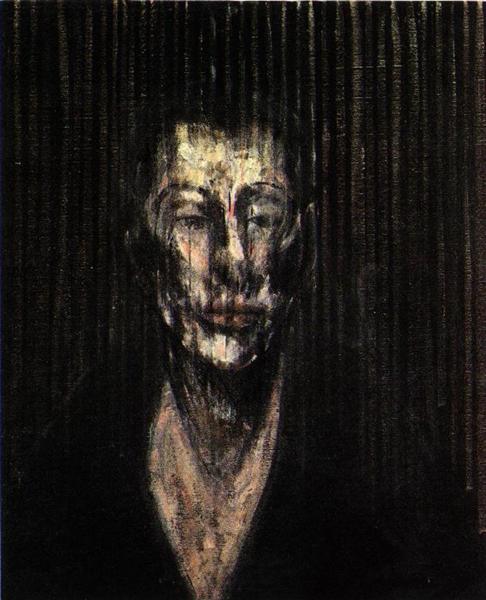
The Danger in the Afternoon of Life
Jung asserted that midlife is a time of “enormous psychological importance,” and most of us embark upon it wholly unprepared (1925, ¶ 331a). He further stated that we step into the afternoon of life with the false assumptions that our truths and ideals will serve us, but what was great in the morning will not suffice into the evening (1930-31, ¶ 784). Despite all of the education, erudite worldliness, and hard-earned experience gained in the first half of life, the second half invariably opens up the way to heretofore unimagined suffering. During this time, all manner of crises tend to erupt, requiring us to contemplate our ego consciousness and come to terms with our shadow, the contents of the personal unconscious (and, at times, the collective unconscious) that manifest in the form of complexes, those feeling-toned and emotionally charged ideas that result in extreme woundedness when left unattended. Edward Whitmont (1969) contended that from the forties on, danger may arise when not enough attention is given to inadequate functions that now demand admittance in often threatening ways (p. 147), further explaining that the ego becomes more or less identical to the superior function (p. 145).
According to Stein (1998), the ego’s best tool for adapting to and interacting with both inner and outer worlds is a combination of a superior function and a preferred attitude (p. 32); for Christin, this was extraverted feeling, which seemed to serve her well early in her life. She was loved and affirmed by family and friends, especially by our father and grandmother, who catered to her whims even as the family eked out a living. Too much dependence on Fe, however, contributed to Christin’s poorly developed auxiliary function, Ni, which precluded successes she might have known had she not continually sought affirmation and attention from external sources. Her disappointing performance in college, failure to choose an adequate mate and to anticipate dangers inherent in extramarital affairs, and inability to see the big picture in major arenas of life led to her repeated self-sabotage. Sadly, my sister’s undeveloped Ni provided little use to her ego, which rapidly deflated in midlife.
The inferior fourth function, Christin’s introverted thinking, is the least available for ego utilization (Stein, 1998, p. 32). According to Jung, the inferior function behaves like repressed contents, partly conscious and partly unconscious. In a neurosis, the energy can pass into the unconscious where it can activate in an unnatural way, thus allowing the formulation of fantasies (1921/1971, ¶ 764). Analysis is then needed to disentangle the inferior function from the unconscious, thus bringing the fantasies into consciousness so they can be realized (¶ 764). In Christin, fantasies took the form of obsessions. Unfortunately, she refused any type of treatment that might have addressed her neurosis.
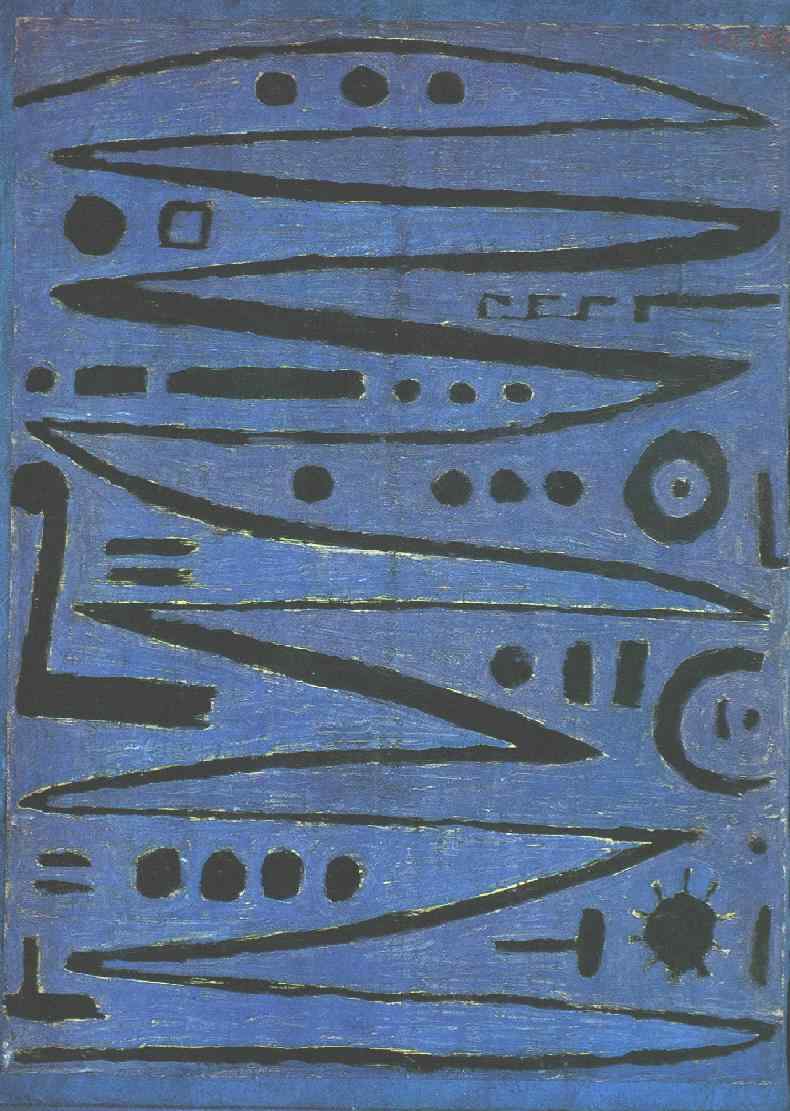
[What she is doing]…is not yet what is really wanted, and there is always the fantasy that sometime in the future the real thing will come about. If this attitude is prolonged, it means a constant inner refusal to commit oneself to the moment … .There is a terrific fear of being pinned down, of entering space and time completely, and of being the one human being that one is [emphasis added]. (p. 2)
Desperately chasing her waning youth, Christin ramped up her carousing and staying out late until one night she returned home to a drunk husband who reacted by physically assaulting her, leaving multiple cuts and bruises. Although she left him, she soon returned. Craving the amenities of her wealthy lifestyle, Christin was nevertheless in no condition to emotionally care for herself. Her dominant function was a judging function, but Christin’s judgment faltered, giving way to her tertiary function, puella aeterna, Se, an irrational perceiving function. Jung said, “Extraverted irrational types base themselves exclusively on experience, so as a rule, their judgment cannot keep pace with their experience” (1921/1971, ¶ 616). While her dominant function was rational Fe, in this case the tertiary Se function was engaged; meanwhile, her Si function in the trickster position kept her repeating the same behavior while expecting different results (Shumate, 2017, p. 3).
While still devoted to our parents, during these years Christin became more and more distrustful of others. Often secretive, she became more so in midlife as minor falsehoods about insignificant matters morphed into complex webs of lies and indiscretions, in which, sadly, I was sometimes complicit. According to Shumate (2018), when we resist the inferior function and the shift of libido it signals, we can fall through it into the unconscious (personal communication). With Christin’s inferior function, Ti, she possibly fell prey to her inner trickster, thus imagining tricksters everywhere; ultimately, she tricked herself.
Unraveling
Soon after the domestic abuse, Christin’s world rapidly unraveled as paranoia hijacked her thinking and behavior. Early on, because my sister had been my heroine and role model, and because she was so persuasive (a key asset of dominant judging types), people had to point out to me her increasingly bizarre behavior and distrust of others. I wanted to believe the validity of her suspicions about being watched and followed as I grappled with the reality that she was coming undone. Von Franz (2013) affirmed the inferior function (Ti) “makes the bridge to the unconscious,” and if people do not give it time and attention, it will be replaced “with some kind of artificial mechanism—with a crutch” (p. 17). It was during this time when Christin was seeking out medications for a variety of illnesses that she, in her charming manner, befriended Dr. Ford, a senile physician who supplied her with Xanax and opioids for self-medication. Again, my sister’s dominant Fe worked with her Se puella as she sought drugs that would provide a modicum of relief, some form of instant gratification rather than face the prolonged pain of inner work. Hijacked by her shadow trickster introverted sensation (Si), she was convinced the respite she so desperately sought would come in the form of a pill; thereby she justified her emotional seduction of Dr. Ford.
A few years following the domestic assault, my sister and her husband divorced, and she moved back to the childhood farm, which she then owned. Christin’s inability to think coherently worsened and led to her enlisting people with questionable intent to help her with life’s every detail as she indiscriminately paid them huge sums of money, eventually leading to her indigence. She incessantly fantasized about being sick and having an inoperable tumor twisted around her spine, a rarity in the medical world. Her delusion darkly mirrors Beebe’s (2007) theory regarding the spine of the personality. He argued that the superior and inferior functions and their opposite-attitude shadows, along with their associated archetypes, form the personality’s core (p. 2). When there is adequate development of both the superior and inferior functions, the “spine” of consciousness forms and gives a personality its backbone (p. 4). Christin was virtually “spineless” due to her undeveloped inferior function, Ti. Because of her remarkable physical condition, she imagined that a Dr. Fisher, one of her former pain-management doctors, was a type of mafia doctor who, with a host of his “people,” wanted to kidnap Christin to harvest her exclusive body parts. This illusion became her mantra and remains so today, twenty-three years later.
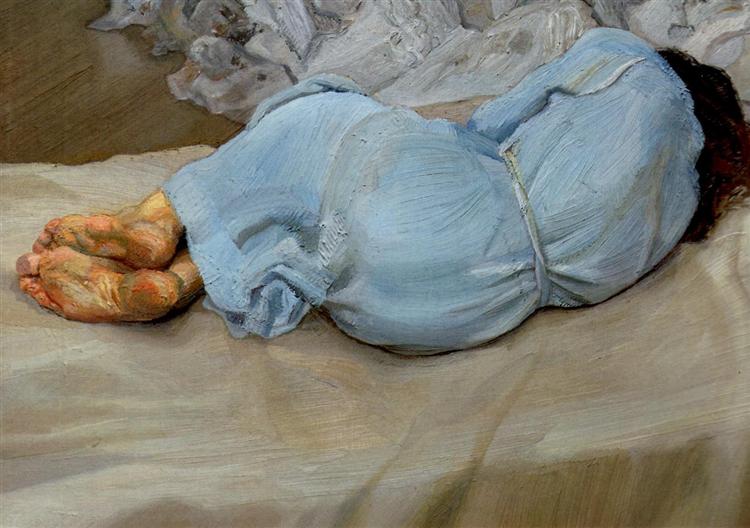
Physicians may be drawn to their professions due to introverted thinking preferences in which a focus on logical analysis is key. Haas and Hunziker (2006) deemed that introverted thinking types create precise and gridlike systems of categorization in order to sort information to make decisions, seek internal precision, and use “truth as a guiding principle” (pp. 84-88). Christin severely lacked these attributes. Von Franz (2013) considered the inferior function as the ever-bleeding wound of the conscious personality wherein personifications of the shadow and the anima/animus may appear (p. 72). The anima/animus, a contrasexual archetype, is associated with the soul and is considered to be vital in providing “maturity, balance, passion, and perseverance” (Haas & Hunziker, 2006, p. 178). Accordingly, Dr. Fisher, who successfully continues his practice today, likely represents Christin’s animus. Von Franz (2013) believed that through the bleeding wound “the unconscious can come in and enlarge consciousness” if individuals are willing to “succumb, to suffer defeat in order to develop further” (p. 72). Jung referred to this contrasexual archetype as the soul-image, and his comment in Psychological Types strikes at the heart of Christin’s preoccupation with Dr. Fisher:
In all cases where there is an identity with the persona, and the soul accordingly is unconscious, the soul-image is transferred to a real person. This person is the object of intense love or equally intense hate (or fear). The influence of such a person is immediate and absolutely compelling because it provokes an affective response. (1921/1971, ¶ 808)
Whitmont (1969) argued that our inadequate functions open the door through which our difficulties, problems, frustrations, and sufferings reach or overtake us (p. 145); Christin’s stifled need for soul came in through that door and presented as “primitive and infantile thoughts and emotions” (Sharp, 1989, p. 41) that focused only upon her and her overwhelming fear of, or desire for, her animus, Dr. Fisher.
When Christin’s illness accelerated in midlife, her shadow functions emerged as she began to exhibit behaviors opposite from the person she had once been. Rather than rigorously confront her crisis, my beloved sister fell into her shadow Ne function, which was filled with paranoia. Refusing to take responsibility for her Ti animus weakness, she began to live out of her opposing personality function, Fi as she either sacrificed herself to please others by doing whatever they asked or lied in order to avoid confrontation. I often implored her, “Christin, why don’t you say ‘no’ when people ask you to compromise yourself?” Her reply: “Because I don’t want to make anyone mad.”
Beebe (2008) argued that the opposing personality is characterized as paranoid and avoidant (p. 12), which, during and after the mid-life crises, fits Christin’s character well. My sister’s descent became a haze of madness for her and grief for the family as she psychologically deteriorated and fell deeper into the morass of drugs and alcohol. Wandering an interstate highway in a hysterical state while “fleeing” from Dr. Fisher, Christin was finally apprehended and taken to the state hospital where she was eventually diagnosed, at the age of 51, as suffering from paranoid schizophrenia. Schizophrenia, a chronic psychiatric condition affecting a person’s thought processes and making it difficult to think clearly, most often manifests in the late teens and early twenties to thirties; late onset schizophrenia, however, has recently emerged as a major health concern worldwide and accounts for approximately twenty percent of those affected by the disease (Folsom et al., 2006, ¶ 7).
Jung’s description of schizophrenia demonstrates how Christin’s split from her animus and its projection onto Dr. Fisher led to her dissociation from reality:
[In schizophrenia] the split-off figures assume banal, grotesque, or highly exaggerated names and characters, and are often objectionable in many other ways. They do not, moreover, co-operate with the patient’s consciousness. They are not tactful and they have no respect for sentimental values. On the contrary, they break in and make a disturbance at any time, they torment the ego in a hundred ways; all are objectionable and shocking, either in their noisy and impertinent behavior or in their grotesque cruelty and obscenity. There is an apparent chaos of incoherent visions, voices, and characters, all of an overwhelmingly strange and incomprehensible nature (1958/1960, ¶ 508).
Christin’s life became a revolving door of hospitals, antipsychotic drugs, fear, and paranoia that led to her being an outcast at the age of 51. My aging parents could not cope with her behavior. Her ex-husband and I tried desperately to help her, but she wanted no part of getting in touch with her maladies, much less her soul. She finally moved into an assisted living facility where she stayed for fifteen years, heavily medicated but still charming enough to manipulate others to give her whatever she wanted: food, medication, and sympathy.
When Christin had depleted her resources at age 69, the family had no choice but to place her in a Medicaid-sponsored facility. Presently, she takes very little medication as the government will neither approve it nor pay for it. Aside from her paranoia, she is cognizant and coherent as opposed to being semi-comatose and staring blankly into space. Tragically, life for my sister consists of lying in bed all day and night, eating as much food as she can get, and thinking of things for me to do or buy for her. Her puella Se function is still evident in her request for expensive make-up and perfume from the finest department store in Dallas in the hopes that she might be noticed by an old boyfriend who is married and lives with his disabled, wheelchair-bound wife in the same facility.
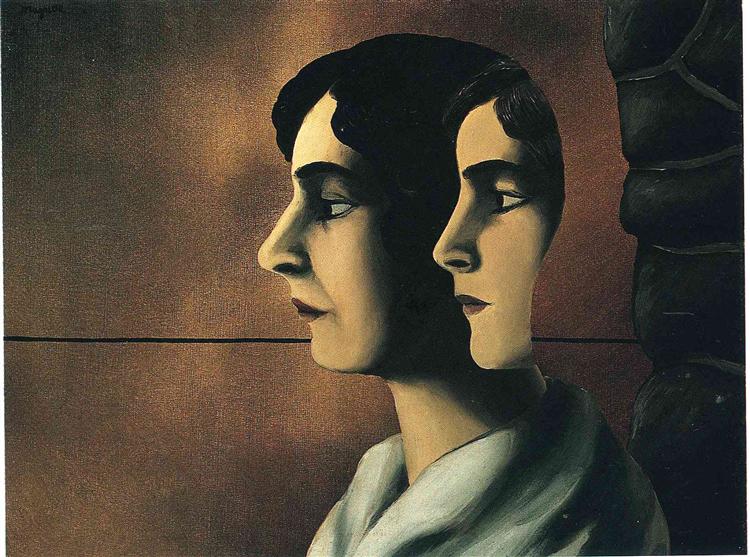
Stasis: A Life on Hold
Confrontation with the inferior function demands we face a neglected part of our wholeness (Whitmont, 1969, p. 146), as it “always makes the bridge to the unconscious” (von Franz, 2013, p. 16). The unconscious can be daunting and terrifying, but regardless of how we try to avoid it, it will eventually erupt in the constellation of complexes (e.g., Dr. Fisher) and archetypes (e.g., the animus, the puella aeterna) which, if unattended, may result in illness and disease, as in the case of my sister who is 5’3”, weighs close to three hundred pounds, and is now diabetic. In her defense, Sandner and Beebe argued that schizophrenia often appears in intuitive types when they are marginally adapted to practical reality (1995, p. 324). This was indeed the story of Christin’s fantasy world. Unfortunately, she failed to develop her inferior animus function, referred to by Beebe (2006) as the “backseat driver” that is required to remind the dominant function of what needs tending to in order for maturation to occur (as cited in Haas & Hunziker, 2011, p. 178). At midlife, states of true animus possession tend to enable archetypal contents to flood an impoverished ego (Sandner & Beebe, 1995, p. 328), resulting in a tragedy of great proportion like the one that unfolds every day in Christin’s isolated world. Dr. Fisher, ever lurking and ready to strike the fatal blow, is but a savior shrouded and suppressed in her mind as demon destroyer.
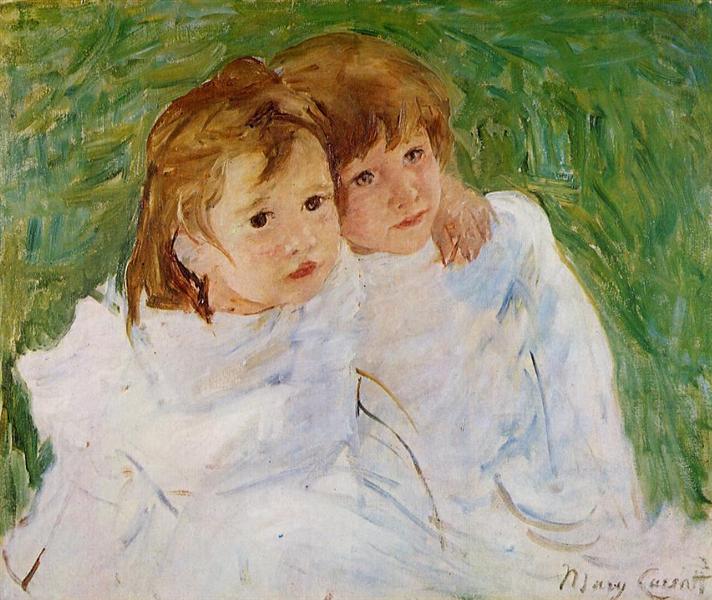
“The Sisters”
Look how the same possibilities
unfold in their opposite demeanors,
as though one saw different ages
passing through two identical rooms.
Each thinks that she props up the other,
while resting wearily on her support;
and they can’t make use of one another,
for they cause blood to rest on blood,
when as in the former times they softly touch
and try, along the tree-lined walks,
to feel themselves conducted and to lead;
ah, the ways they go are not the same.
Rainer Maria Rilke
References
Beebe, J. (2006). Evolving the eight-function model. Association for Psychological Types Bulletin, Winter, 2005, 34-39. (Reprint 2006, Australian Psychological Type Review 8(1), 39-43.
Beebe, J. (2007). Type and archetype. Australian, Psychological Type Review. 9(2), 1-6.
Beebe. J. (2008, Winter). Evolving the eight-function model.: Eight archetypes guide how the function-attitudes are expressed in an individual psyche. C.G. Jung Society of Atlanta, 9-13. http://www.jungatlanta.com/articles/winter08-evolving-the-eight-function-model.pdf
Folsom, D., Lebowitz, B., Lindamer, L., Palmer, B. Patterson, T., Jeste, D. (2006). Schizophrenia in late life: Emerging issues. Dialogues in Clinical Neuroscience. 8(1):45-52.
Haas, L. & Hunziker, M. (2011). Building blocks of personality type: A guide to using the eight-process model of personality type. Temecula, CA: TypeLabs.
Jung, C. G. (1925). Marriage as a psychological relationship. (R. F. C. Hull, Trans.). In H. Read et al. (Eds.), The collected works of C. G. Jung (Vol. 17, pp. 187-201). Princeton, NJ: Princeton University Press.
Jung, C. G. (1930-1931). The stages of life. (R. F. C. Hull, Trans.). In H. Read et al. (Eds.), The collected works of C. G. Jung (Vol. 8, pp. 387-403). Princeton, NJ: Princeton University Press.
Jung, C. G. (1960). Schizophrenia (R. F. C. Hull, Trans.). In H. Read et al. (Eds.), The collected works of C. G. Jung (Vol. 3, pp. 256-271). Princeton, NJ: Princeton. University Press. (Original work published 1958)
Jung, C. G. (1966). On the psychology of the unconscious (R. F. C. Hull, Trans.). In H. Read et al. (Eds.), The collected works of C. G. Jung (Vol. 7, 2nd ed, pp. 1-119).Princeton, NJ: Princeton University Press. (Original work published 1943)
Jung, C. G. (1971). Psychological types (R.F.C. Hull, Trans.). H. Read et al (Eds.), The collected works of C. G. Jung (Vol. 6). Princeton, NJ: Princeton University Press. (Original work published 1921)
Jung, C. G. (1983). Memories, dreams, reflections (A. Jaffe, Ed.) (R. Wilson & C. Wilson, Trans.). London, England: Flamingo. (Original work published 1963)
Myers, I. & Myers, P. (1980). Gifts differing: Understanding personality type, (2nd ed.) Palo Alto, CA: Consulting Psychologists Press.
Rilke, R. (1907-1908). The Sisters (E. Snow, Trans.). Retrieved from https://www.poemhunter.com/poem/the-sisters/
Sandner, D. & Beebe, J. (1995). The role of psychological type in possession from psychopathology and analysis. In M. Stein (Ed.), Jungian analysis (2nd ed., pp. 322-330). Chicago, IL: Open Court.
Sharp, D. (1987). Personality types: Jung’s model of typology. Toronto, Canada: Inner City Books.
Sharp, D. (1991). Jung lexicon: A primer of terms and concepts. http://www.psychceu.com/jung/sharplexicon.html
Shumate, C. (2017). The function-archetype decoder. Excerpted from Jung’s eightfold way (in preparation). Adapted with permission from McAlpine, R., Shumate, C., Evers, A., & Hughey, D., The function-archetype decoder [software program], 2009. Louisville, KY: Type Resources.
Stein, M. (1998). Jung’s map of the soul: An introduction. Chicago and LaSalle, IL: Open Court.
Thomson, L. (1998). Personality type: An owner’s manual. Boston, MA: Shambhala
von Franz, M.-L. (1970). The problem of the puer aeternus. New York, NY: Spring Publications, Analytica Psychology Club of New York.
von Franz, M.-L. (2013). The inferior function. In M.-L. von Franz & J. Hillman. Lectures on Jung’s typology. Putnam, CT: Spring Publications. (Original work published 1971)
Whitmont, E. (1969). The symbolic quest: Basic concepts of analytical psychology. Princeton, N.J.: Princeton University Press.
Woodman, M. (1993). Emily Dickinson and the demon lover. (CD). Boulder, CO: Sounds True Recordings.
Wubbenhorst, T. (1991). Music educators’ personality types as measured by the Myers Briggs Type Indicator. Contributions to music education, (18), 7-19. Retrieved from http://www.jstor.org.pgi.idm.oclc.org/stable/24127316
Images
Bacon, F. (1955). Lisa. Retrieved from wikiart.org
Cassatt, M. (1885). The sisters. Retrieved from wikiart.org
Freud, L. (1988). Annabel sleeping. Retrieved from wikiart.org
Klee, P. (1938). Heroic fiddling. Retrieved from wikiart.org
Magritte, R. (1927). Faraway looks. Retrieved from wikiart.org
Metcalf, W. (n.d.). Farm buildings in a winter landscape. Retrieved from wikiart.org
Rivera, D. (1952). Portrait of the young girl Elenita Carillo Flores. Retrieved from wikiart.org
Zabelata, R. (1933). Portrait of two girls. Retrieved from wikiart.org



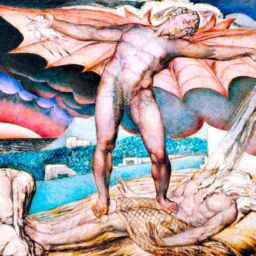
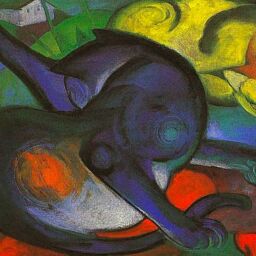

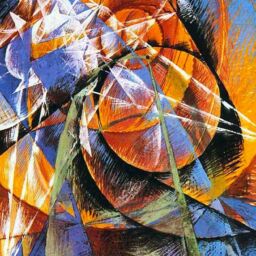

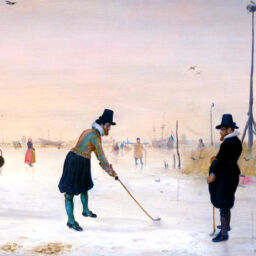
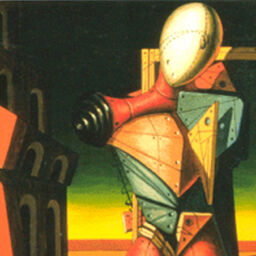

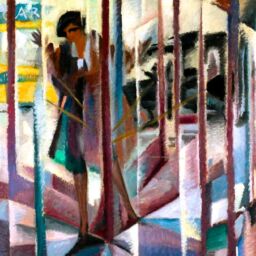
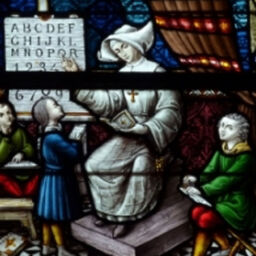
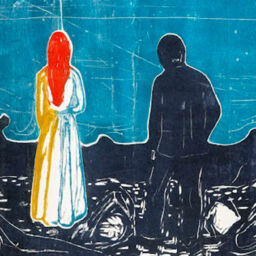


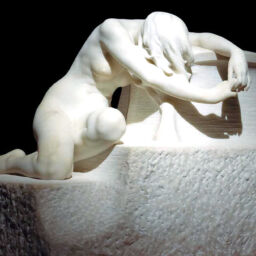
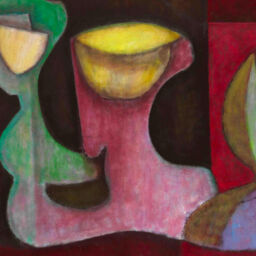
Appreciate this post.
Great post.
This is beautifully enlightening and deeply tragic. Thank you for sharing this.